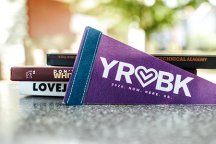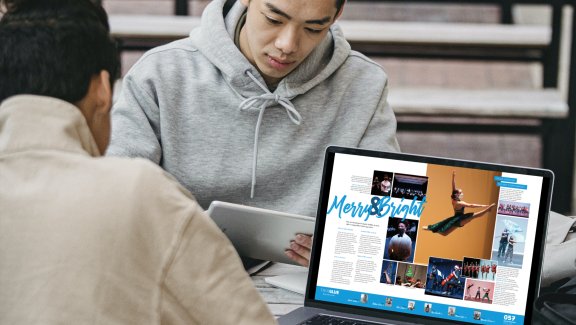Arguably the most important group to consider when working a yearbook theme is the yearbook’s audience. For most schools, that involves the tricky task of creating a concept that can be enjoyed by a vastly diverse group of students and faculty.
One way to better reach your whole-school audience is by incorporating a thematic link — a device that serves the dual purpose of enhancing your coverage, connecting to your readers, and furthering your theme. The goal of a thematic link should be to reach every member of the school community.
LET’S LOOK AT SOME EXAMPLES
In 2021, Bryant High School [AR] selected the theme It’s the Little Things. To provide continuity and improve coverage throughout the book, they featured recurring thematic modules with spin-off titles incorporating words like little, minor, tiny, and small to reinforce theme. In addition, the modules took up a small amount of space within the spread, making them quite literally “little things” on the page.
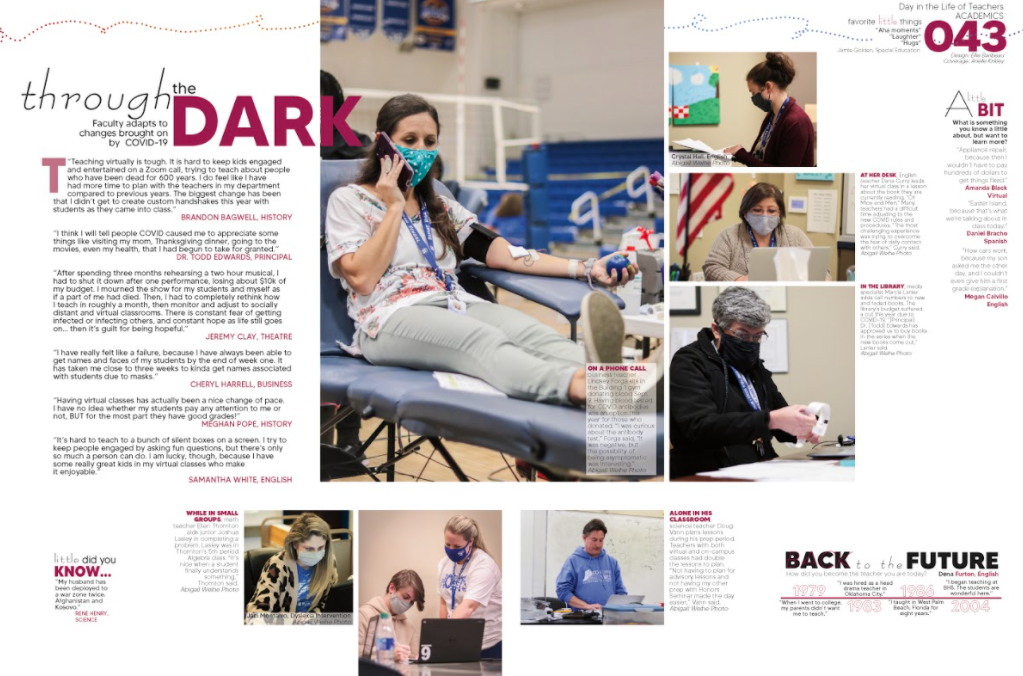
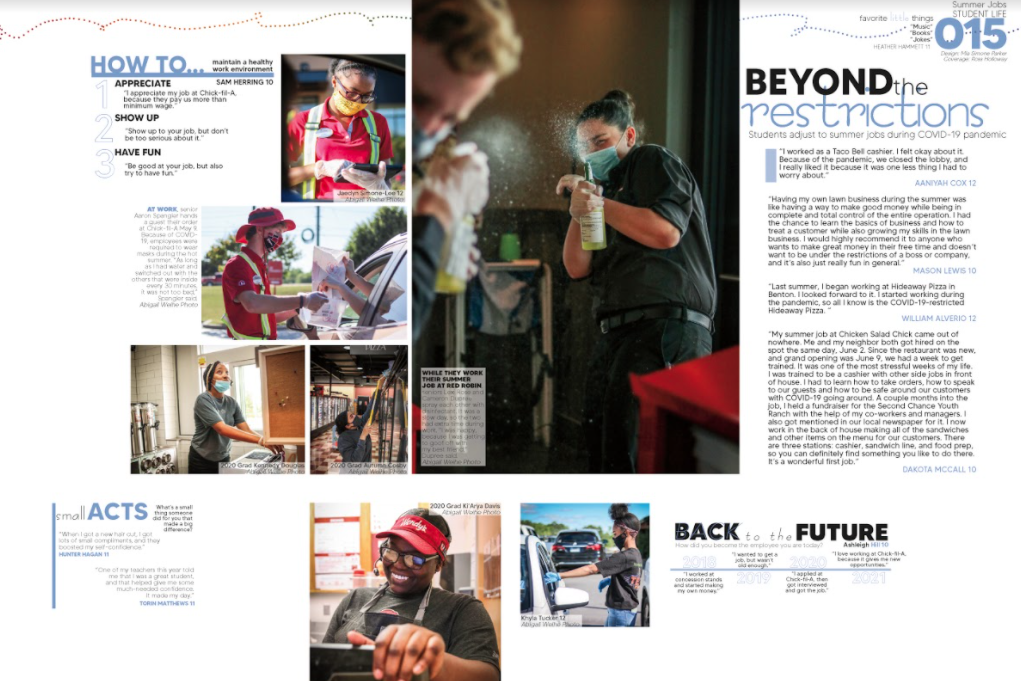
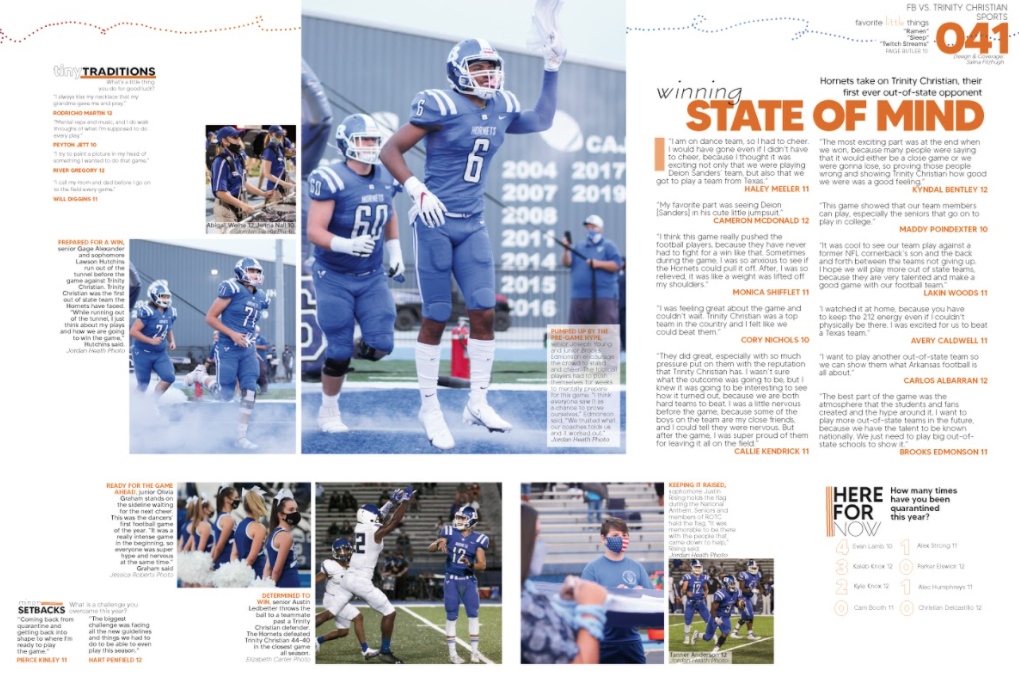
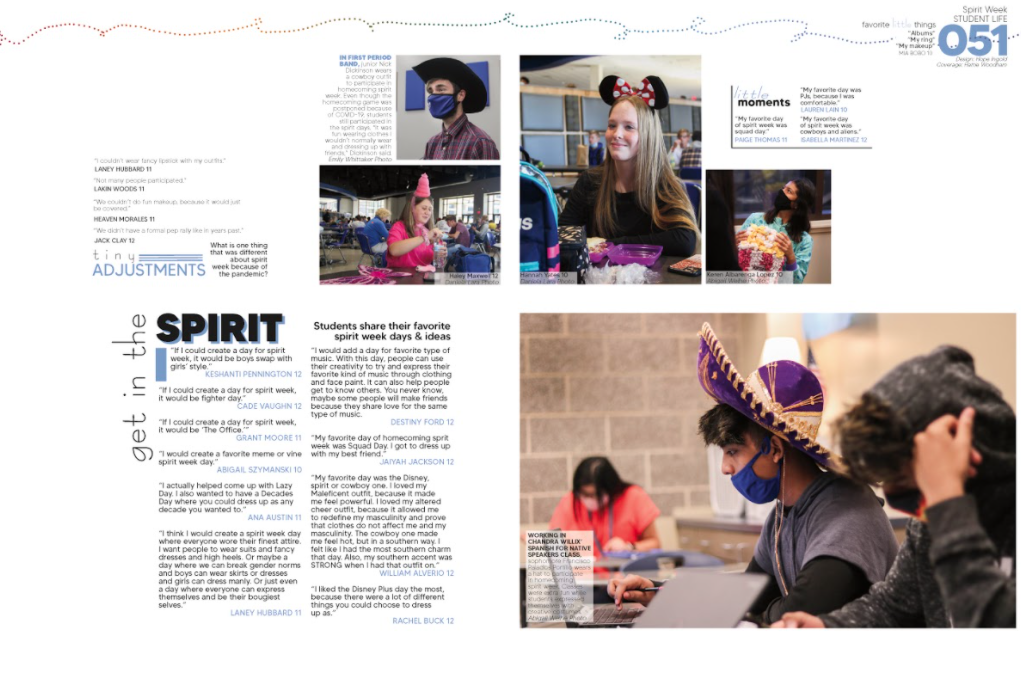
Rock Hill High School [TX] took a different approach in their 2021 book. Their theme, Feeling Blue referenced the emotional state of attending school during a pandemic, but was also a nod to their school colors. Along the bottom of their book, they ran a recurring True Blue module, that featured individual student responses to various interview or survey questions, designed to get their school community talking about who they were and how they felt. The module improved individual student coverage while adding a pleasing continuity to the book’s page design.
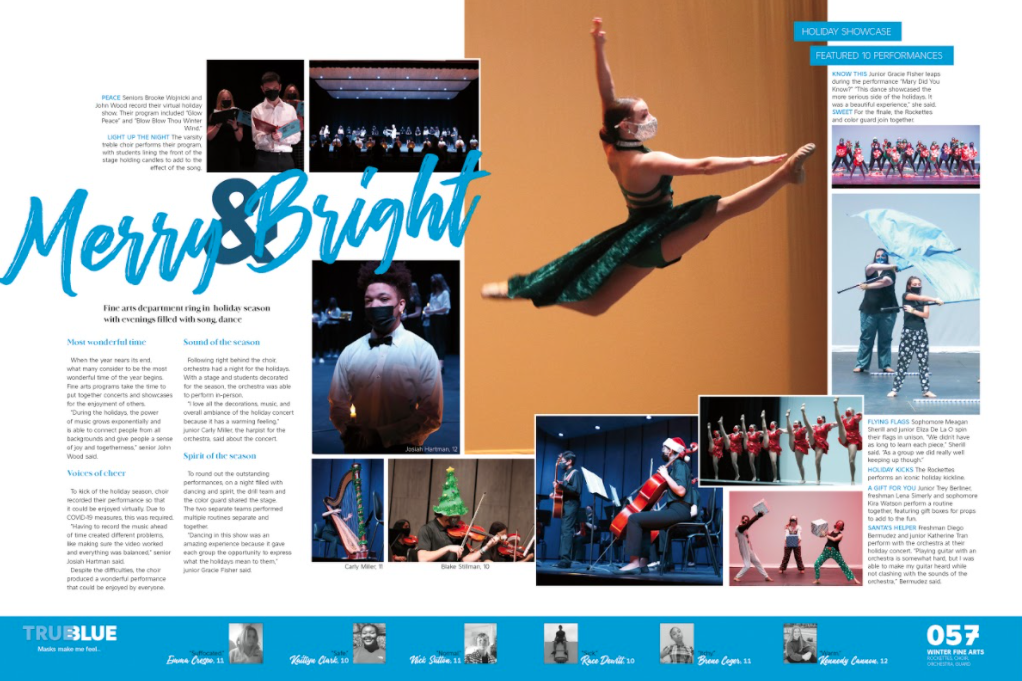
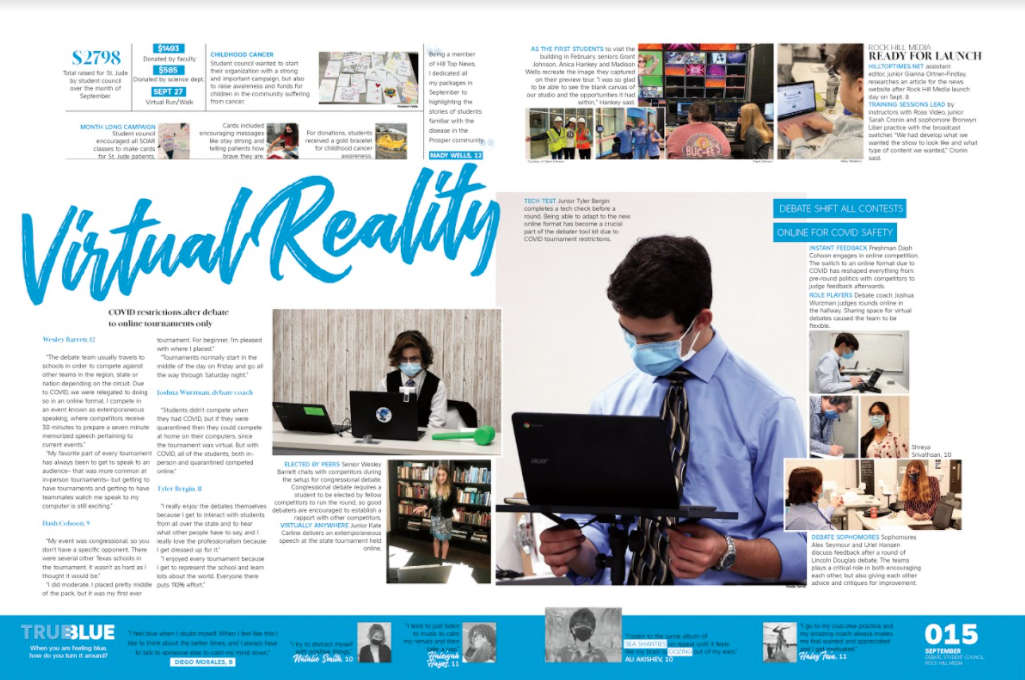
Incorporating a thematic link adds a more cohesive look and feel to your yearbook design, while also bringing a greater sense of relevance to your school community. You may discover as you start gathering related theme data, that it builds excitement among students and staff for your yearbook. So, get started today.
CASE STUDY: KEALING MIDDLE SCHOOL, [TX]
For several years, Kealing’s yearbook created a yearbook theme that they shared with the school’s advisory/homeroom program. They used this symbiotic relationship to both generate excitement and content for their book. Here are just a few of the ways they created content for thematic links that reached their entire school community.
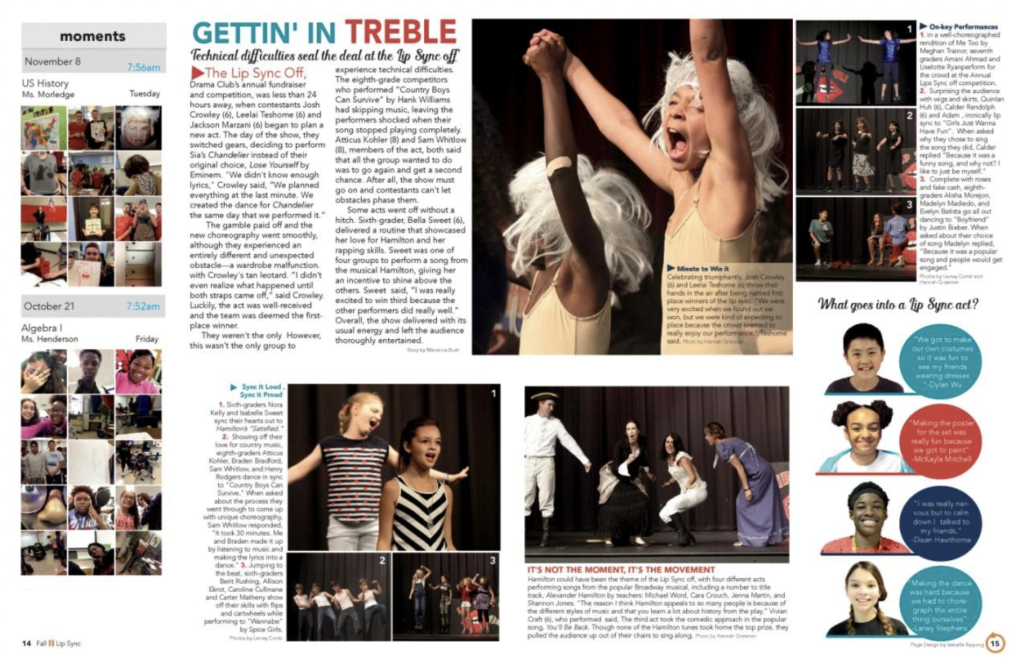
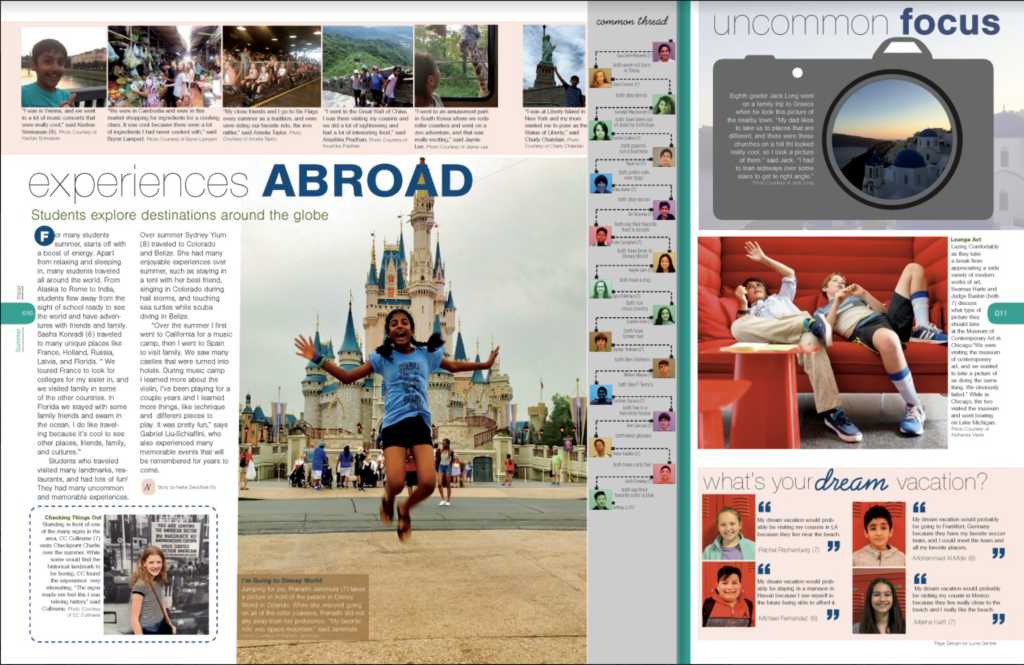
- In a Pi-themed yearbook, each student in the school was given a digit of numeral pi and they were asked to relate that number to something about their lives. Digits and facts ran (in order) along the bottom of the book, showcasing each student.
- For a theme of In the Moment, students in each class were given cameras and were asked to take an individual photo at a precise moment in time. Moments were printed in a recurring module along the left side of the book, noting the date, time and class that they were taken. (pictured top left)
- For a 30th anniversary book, students responded to survey prompts that had to do with increments of time and the number 30 (30 seconds, 30 minutes, 30 years, etc.). Answers were printed on the right-hand side of every page (30 responses were featured on each page).
- In a yearbook with the theme, Common Thread, students completed an activity in their advisory class. In it, students were asked to find an unseen connection to another member of their class. For instance, Jose and Daniel both like soccer. Daniel and Adele both have a dog. Adele and Marjan both like Chex Mix. Each advisory’s common thread was displayed on a different page of the book. (pictured top right)

